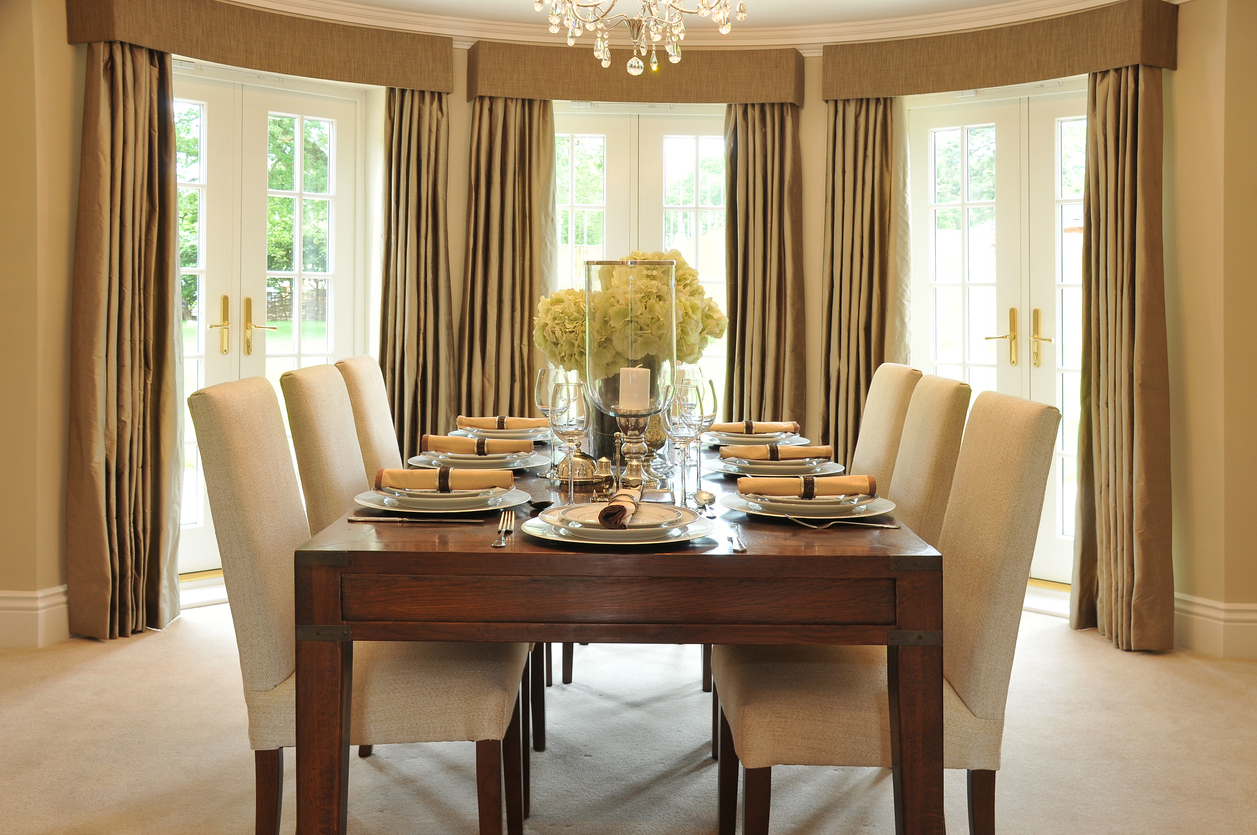Your dining table is a place of gathering for you and family or friends to enjoy delicious meals—whether it is occasionally when you have friends over or as a daily “ritual” dinner gathering that you have as a family. Whatever the case may be, it is great to have a dining set that you both love and lives up to the occasion as it arises. As you determine which dining table to get, there are a few considerations to take such as chair spacing, table placement, table accessibility, dining function, table shape, height, and table seating capacity.
Chair Spacing
Now, while you are choosing the dimensions of your dining table, the size of your dining chairs also matters. The size matters as they complement the dining room’s aesthetic and are vital for the comfort of your guests and family while making sure that there is enough space for everyone at the table. For your chair spacing, you need to consider the height and width of the chair and if the chair would be armless or with arms. A typical dining chair is 17.5 inches high, but of course, you may find some that are a little higher, up to 20 inches. It is important that if you have a low table, your chair should also be low.
When considering the width of your chairs, go for a set of chairs that allows you to fit everyone around the table and fit between the legs of the table without getting stuck. Although chairs with arms are more comfortable, chairs without arms take up less space and are considered more modern.

Table Placement and Accessibility
The typical placement for the dining table is at the center of your dining room. This allows your guests to move around the table without hitting other chairs in the room or a wall. Basically, it would help to leave some space—at least three feet in a small room from the edge of the table to the nearest wall.
Dining Function: Formal or Family Dining Seating
Dining tables may also double for formal occasions that you host, and if this is going to be a constant, it would be great if you consider how often you host special occasions throughout the year. If you host most or all the family gatherings and you have a formal setting, it may help to plan a family setting into your dining room setup.
You just might be curious as to how formal and dining sitting differ; it is majorly in the seat spacing, so if you are having a holiday or special event, you may want to space the seats by up to 12 inches or more so your guests feel pretty comfortable around each other. A formal dining room setting is also popular in homes with traditional dining rooms rather than an open living area. For family dining seating, you can place your chairs fairly close as most of your guests are likely to be related to you. If you have a combination of family and formal gatherings, you can invest in some extra chairs and dining sets that you can easily space out as the occasion demands, you can also keep a few extra chairs in the garage that you can dust off as needed.

Table Height and Shape
When considering height, generally, the standard dining table height is just high enough to be wheelchair-accessible and comfortable for kids. A standard-height dining table allows your guests to rest their feet naturally on the floor. If you want to go for a different setup, you can opt for a counter-table height in combination with stools. Typically, this setup puts your seats at the same level as the table and it’s great for a casual environment.
When you have settled on a height, you may now consider a shape for your table with typical shapes being oval, circular, square, or rectangular. Rectangular tables seat the most people and it goes perfectly with a rectangular dining room and usually has plenty of room in the middle for serving food. Oval tables are great for families, are excellent for casual settings, and come with the benefits of a rectangular table while saving space due to its rounded edges. An oval table works well in a narrow room and whenever you need more space for guests.
For small or square rooms, round dining tables are perfect gems, giving a cozy feel when it’s small but when they are large, conversing across the table can be somewhat of a long-distance relationship. Square tables are also great for small rooms and can give a very intimate feel, but when there is a need to accommodate more people, they can become too big just like circular tables.

Table Seating Capacity
Having made all your considerations, you are now ready to buy a dining table and seats, but if you’re not sure of what size to go for, we have a table size guide for you for all shapes.
Round Table
| Diameter (ft) | Seating Capacity |
| 3 | 2 to 3 |
| 4 | 4 to 6 |
| 6 | 8 to 9 |
| 8 | 10 to 12 |
| 9 | 11 to 14 |
| 10 | 12 to 15 |
Rectangular Table
| Width (ft) | Length (ft) | Seating Capacity |
| 2.5 | 3.5 | 2 |
| 2.5 | 5 | 4 to 6 |
| 3 | 6 | 6 to 8 |
| 3.5 | 8 | 8 to 10 |
| 4.5 | 10 | 10 to 12 |
Oval Table
For oval tables, when measuring them, it helps to just treat them like rectangular tables with a width and a length.
| Width (ft) | Length (ft) | Seating Capacity |
| 2.5 | 3.5 | 2 |
| 2.5 | 5 | 4 to 6 |
| 3 | 6 | 6 to 8 |
| 3.5 | 8 | 8 to 10 |
| 4.5 | 10 | 10 to 12 |
Square Table
With a square table, all sides are equal in length, so you only need to measure one side of the table.
| Length (ft) | Seating Capacity |
| 2.5 | 2 |
| 3 | 4 |
| 5 | 4 to 6 |
| 6 | 8 to 10 |
| 8 | 8 to 12 |
Call or Visit Us!
We sure hope you are able to make a superb choice of dining table and spacing for your magnificent dining area. Check out what our impressive selection of quality dining room furniture can do for you! And if you have any questions, reach out to our experts. We are always happy to help.